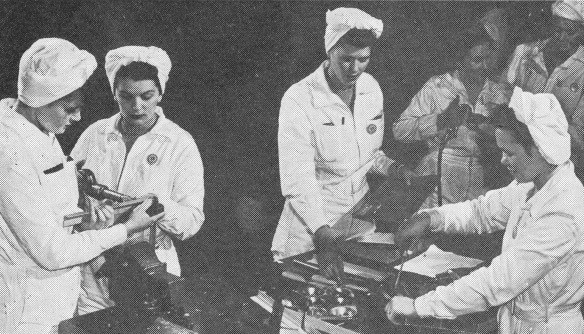Labour was short, supplies were rationed, women took over male-dominated jobs and school enrolment dropped suddenly with the loss of Japanese students.
This was just some of the impact on life in Richmond during the Second World War as the township began a full-scale war effort that would continue for the next five years.
As more and more men left employment for the military, women and young boys took over the vacant jobs. Women were trained to assemble aircraft at the Boeing Plant on Sea Island.
But Richmond’s problems with labour shortages weren’t entirely due to military service. In April 1942, more than 2,000 Japanese-Canadians were sent out of the city to internment camps, following Japan’s attack on Pearl Harbour in December 1941.
This meant Japanese students were pulled out of Richmond schools and, overnight, enrolment dropped drastically. Lord Byng elementary went from 500 students to 137 and a school built for children of cannery workers on Sea Island was shut down.
Beginning in 1943, on orders from the federal government, men between the ages of 16 to 40 had to register at employment offices and be available for transfer from their current jobs to ones deemed high priority during wartime, including military, production or maintenance of services.
In the fishing industry, workers often had to be imported to try to fill the void left behind after the forced exodus of Steveston’s Japanese fishers, whose boats and property had been confiscated.
Rationing was commonplace, as all available resources and supplies went towards the war effort.
Gasoline, rubber and metals were either rationed or not available due to wartime industry and household goods – such as meat, sugar, tea and coffee – could also only be purchased with ration coupons.
The peat mining industry thrived, providing an alternative fuel, and there were programs and drives to collect scrap materials, including metal, paper and cooking grease.
To raise money for the war effort, the government sold bonds - Richmond contributed more than $1.3 million to the National War Finance Committee.
To support those serving overseas, Red Cross volunteers would knit, sew and repair clothing that would be shipped overseas and collect magazines and cards for servicemen.
In Richmond, there were two home guard units set up in the event of a local attack.
Over 90 men, who didn’t qualify for overseas service, formed the Pacific Coast Militia Rangers – spurred by fears of enemy warships and submarines lying off the coast.
Another home guard unit was the Air Raid Protection Unit (ARP), formed by the city’s volunteer firefighters, who supervised air raid drills, blackouts and practice evacuations for Richmond residents.



